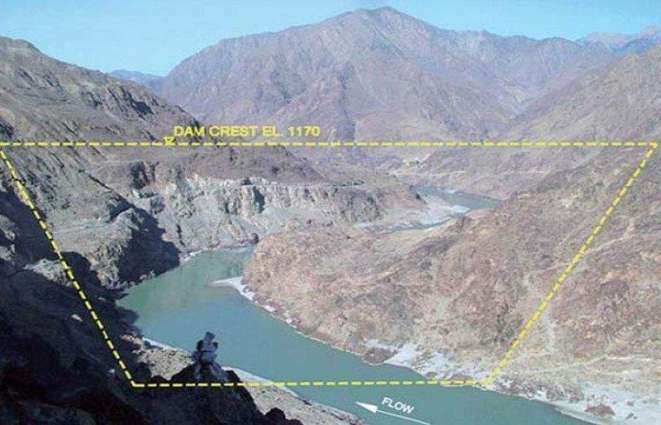Alwaght-The stand-off between Chinese and Indian troops along the Line of Actual Control is in its 13th week, and disengagement seems to have stalled as no signs of alleviation for the heat of the dispute are in sight.
Analysts have warned that Kashmir can be the next front in the two nuclear neighbors’ dispute, but with a difference: There is another claimer in Kashmir. It is Pakistan.
India has expressed its strong objection to construction of the multipurpose, multi-billion dollar Diamer Bhasha Dam in the Pakistan-administered Kashmir by Chinese companies.
Due to its hard economic conditions and also facing closed doors of the World Bank, Asian Development Bank, and even its Western allies to its demands to finance the megaproject, Pakistan has been unable to complete the dam for years. The project is located in a region in the disputed Kashmir. Even in 2018, Pakistan’s Chief Justice Mian Saqib Nisar created a fund and asked the Pakistanis at home and abroad to make donations to help the financially-struggling government to start the costly project. At the time, the decision threw many observers in surprise.
The patriotic crowdsourcing campaign managed to raise about $103 million up to July 2020 but the sum was far less than the expense of the dam that is estimated to touch $8.5 billion. This was a disappointment for the Pakistanis and their government, until the wealthy China said it will flood the project with finances, of course to Indian frustration. Officials at the Pakistan’s Water and Power Development Authority have revealed that China will very likely finance 70 percent of the project.
Due to the national growth potentials of the dam, which could help develop the power and agriculture sectors, Pakistan gives strategic priority to the project. The power plant at the dam installation can produce 4,500 megawatt of electricity, which is huge statistically. But political differences with India overshadow the project.
Since the split of the Indian Peninsula in 1947, both India and Pakistan laid claims to Kashmir, saying that the region was inseparable from their mainland. That is why after Pakistan signed construction contract with China, the Indian foreign ministry released a strong-toned statement of objection, arguing that the dam violates its “territorial sovereignty.”
India does not oppose the project just because it strengthens the Pakistani position in Kashmir but also because China is eyeing deeper business ties with Pakistan, something New Delhi finds against its interests. India and the West accuse China of using its geopolitical potentials to expand in post-coronavirus period.
So, Pakistan becomes a tension point in the Chinese-Indian dispute that had been moving to escalation for the past decade. The recent clashes of the two sides’ troops at the Actual Line of Control in Aksai Chin region is an important development taking place since the 1962 war. Putting hand on the Indian vulnerability and weakness is a key point in the Chinese policy of closeness to Pakistan.
China has so far invested $29 billion in Pakistan. The investment is both direct and indirect that include loans and finances for projects like power plants , highways, railways, a new port in Gwadar in south of the country, and an international airport in Baluchistan province.
The multi-billion investment seems to be part of the Chinese ambitions for Road and Belt Initiative that will transform China into a world trade hub. Besides, the two countries launched China-Pakistan Economic Corridor (CPEC) in 2015 to connect via a network of ground and sea ways the South East Asia, Central Asia, Persian Gulf, Africa, and Europe.
The CPEC was an initiative of President Xi Jinping of China. Yao Jing, the Chinese ambassador to Pakistan, in comments on the partnership with Islamabad said that when the key projects complete in the first phase, the second phase, focusing on expanding free trade zones and strengthening trade and cultural ties through joint investment and exchange of representations, will start.
In addition to India, the large-scale investment of China in Pakistan have so far drawn opposition from Beijing’s international rivals like Washington. When the economic pact was signed five years ago, the US was top to express its criticism.
Afraid of the Chinese influence expansion in East Asia, the US has been deepening its intervention in the region to check the Chinese toehold gain that is mainly pursued by Beijing through trade partnership accords with regional states. The latest dispute point between the two powers is Sri Lanka. In 2018, Sri Lanka signed a $1.5 billion Hambanthota port lease agreement with China. When new, pro-Western government assumed the power in the South Asian country which is also India’s neighbor, it sought to revoke the agreement with Beijing.
While Washington is pushing for a regional alliance against Beijing, the Pakistani dam project can stand as a new combustion spot in the Chinese-Indian competition.



























